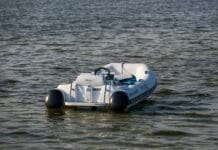This post is also available in:
 עברית (Hebrew)
עברית (Hebrew)
A new engine will be developed for Turkey’s cruise missiles. The Turkish Havacılık (Kale Aero) company has won a contract from the nation’s under-secretariat of defense industries (SSM) to design, develop and produce a miniature turbojet engine for Roketsan’s new cruise missiles, including Standoff Missile (SOM).
According to quwa.org, the SOM is a result of Turkey’s longstanding indigenization drive aimed at reducing the country’s reliance on overseas suppliers for weapons. This is a particularly sensitive issue with stand-off weapons (SOW), which can be costly to procure from overseas and potentially subject to export restrictions.
Currently, the Roketsan SOM and Atmaca anti-ship missile (AShM) rely on the Safran Microturbo TRI 40.
According to defenseworld.net, Turkey identified the need to develop, test and manufacture sub-systems such as alternator, fuel control system, electronic control unit, fuel pump, pyrotechnic igniter and combustion chamber. It also needed to develop testing equipment.
The range of the SOM reaches over 250 km. It has a total weight of 589 kg, with the warhead taking up 227 kg. In turn, the SOM’s warhead options are High Explosive and Blast Fragmentation, with guidance options including satellite-aided inertial navigation and terrain reference.
Roketsan is also working with Lockheed Martin to develop the SOM-J, a smaller variant for use from the F-35 Lightning II’s internal weapons bay.
The engine production is scheduled to begin next year.
The Atmaca, a sea-skimming AShM, will be joining the SOM soon. In October, the Turkish Navy announced that the Atmaca had undergone successful firing tests. Designed as an analogous solution to the MBDA Exocet and Boeing Harpoon, the Atmaca weighs 800 kg (with a 200 kg warhead) and relies on a mid-course INS/GPS guidance suite.


























